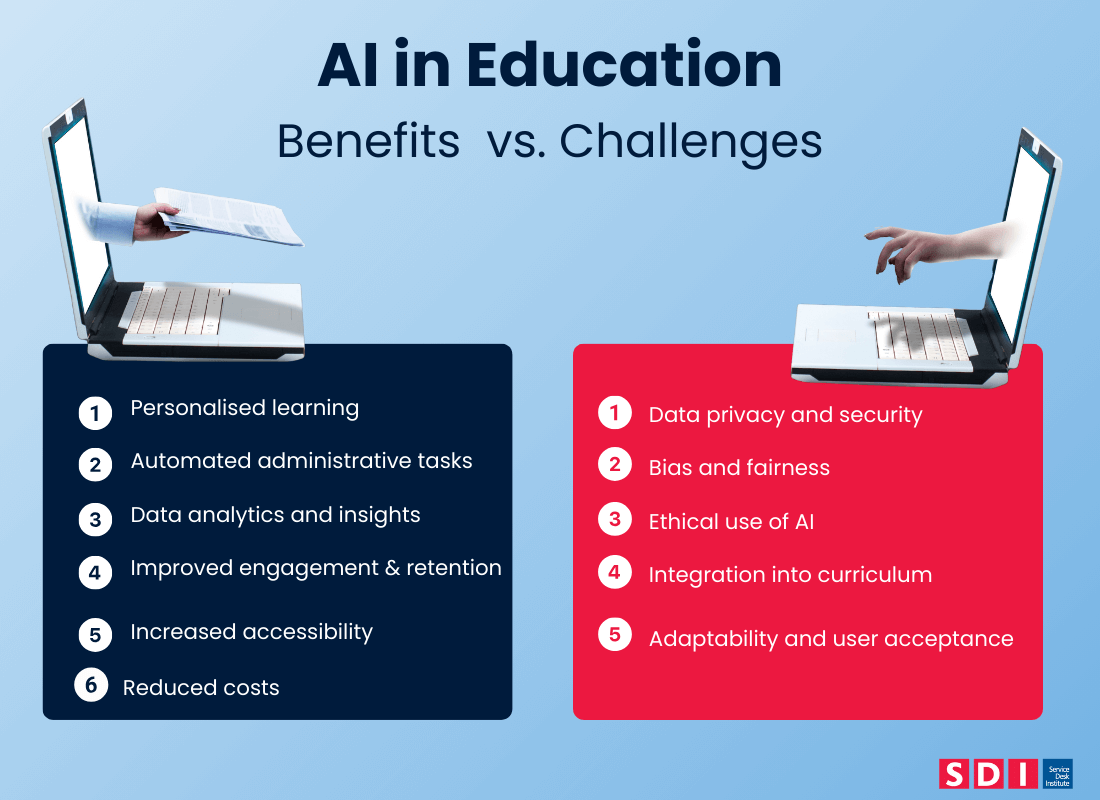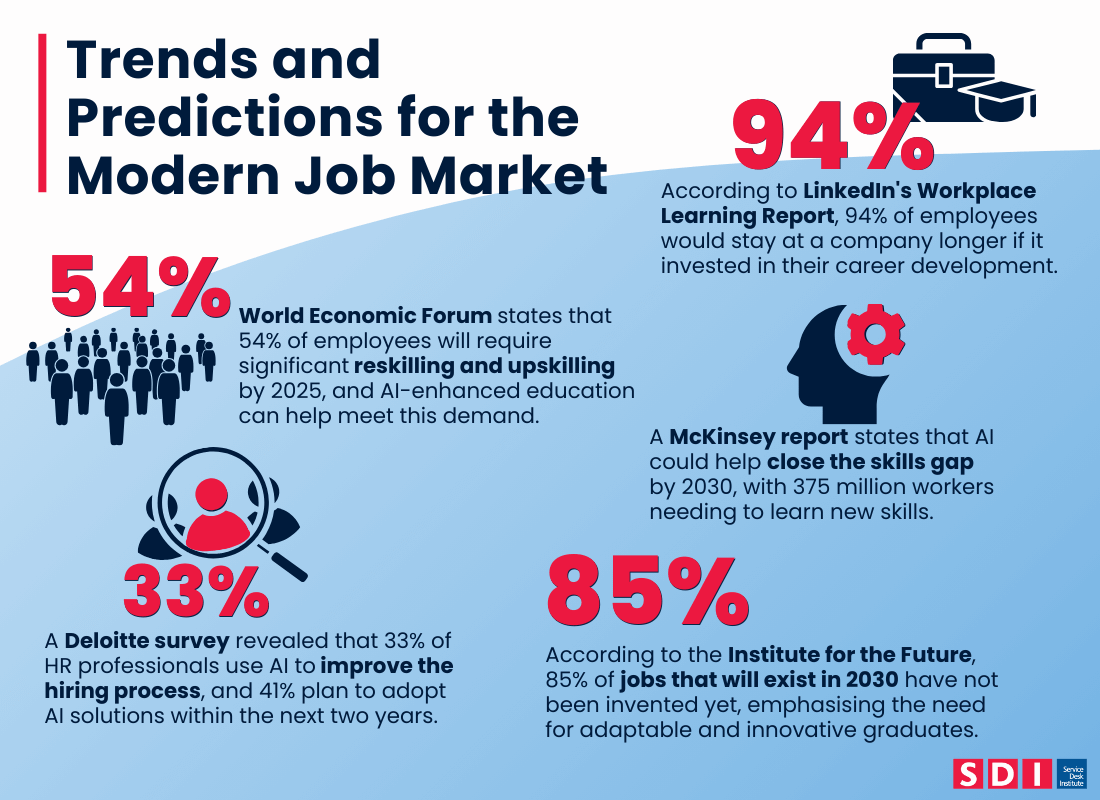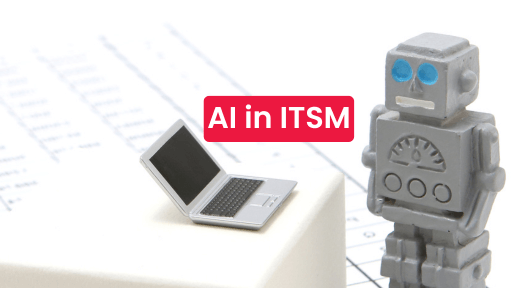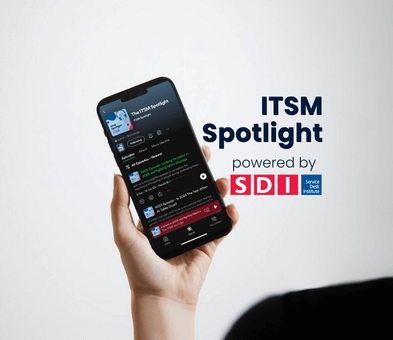 Back to Resources
Back to Resources
No one can deny AI is revolutionising many industries, and the education industry is no exception. It’s clear that AI’s role in learning is expanding quickly, and AI is already transforming how we learn and teach.
According to some data, the global AI market in education is projected to reach $3.68 billion by 2024. This indicates that AI is transforming education across all levels, from providing personalised learning experiences to automating administrative tasks, giving educators more time.
In this article, we will explore the benefits and challenges of AI in education. We will also address how AI is bridging skill gaps, improving learning outcomes, and impacting students, education institutions, and employers.
So, if you’d like to discover how AI is shaping the future of education and what it means for the workforce of tomorrow, continue reading.
Benefits of AI in education

Let’s start by addressing AI’s common benefits or positive impact on education.
#1 Enables personalised learning
One of the first benefits that stand out is the opportunity for personalised learning. AI-powered learning platforms are good for tailoring educational experiences to meet individual learners’ needs. Adaptive learning technologies, like intelligent tutoring systems, pinpoint knowledge gaps and customised support, make learning more effective and engaging.
“According to a report from McKinsey & Company, AI could improve student outcomes by 20% through personalised learning paths.”
#2 Streamlines administrative tasks
Another great benefit is the ability to automate administrative tasks such as grading, scheduling, and student enrollment. For example, AI-driven grading systems can evaluate assignments and exams, providing real-time feedback. This automation frees educators and enables them to focus more on teaching and engaging with students.
“According to a study by the World Economic Forum, AI-driven automation in administrative tasks could reduce educators’ workloads by up to 40%, allowing more time for direct student interaction.”
#3 Offers data analytics and insights
Predictive analytics allows educators to monitor everyone’s progress, engagement, and behaviour. For example, they can identify certain behaviours, such as at-risk students, and suggest intervention. This can also be very useful for developing curriculum and teaching strategies and techniques.
#4 Improves engagement & retention
⚡Examples:
Let’s first look at LinkedIn Learning. They have introduced new AI-powered coaching. One of the main issues they face is low learner engagement, which often hinders upskilling and the development of learning cultures. That’s why their new coaching chatbot offers personalised, real-time guidance that can be tailored to each learner’s specific needs.
For example, learners can ask the chatbot specific questions about skills they’re struggling with, and the chatbot will respond immediately with advice and recommendations from LinkedIn Learning courses.
Another great example is Duolingo. Duolingo adapts lessons to a user’s learning style and pace. Its AI predicts which words and concepts learners struggle with, adjusting lesson difficulty accordingly.
This personalised approach helps users learn languages more effectively. Duolingo claims that users achieve language proficiency 30% faster using their AI-enhanced learning paths.
Challenges and Ethical Considerations
📊 “According to a report by the Ponemon Institute, 90% of educational institutions have experienced a data breach, highlighting the need for stringent security measures.”
While AI offers great benefits, some challenges can’t be ignored. AI in education involves collecting vast amounts of learners’ data, so ensuring the privacy and security of this data is crucial.
This means that education institutions must implement robust data protection measures and comply with regulations such as GDPR or FERPA.
Another challenge is the heavy reliance on technology. While we can see the benefits of AI in education, heavy dependence on technology for problem-solving and learning may potentially diminish students’ critical thinking and independent study skills.
AI systems are only as good as the data they are trained on. If the data is biased, the AI can perpetuate inequalities. So, it’s important to develop AI systems that are transparent, fair, and inclusive to avoid biased decision-making and ensure equal opportunities for everyone.
Another important thing to keep in mind is the ethical use of AI.
The goal of using AI in education is to enhance learning experiences, not to replace human interaction. This means that human touch and approach are still essential and should not be ignored.
📕 READ MORE: Five Ethical Issues of AI in the Modern Workplace
Trends and predictions for the modern job market

AI integration in the education industry should produce better-prepared graduates, reduce skill gaps, and create a more adaptable workforce. As AI evolves, employers may prioritise candidates with skills that complement AI technologies, such as critical thinking, problem-solving, and adaptability.
But they may also need to adjust their hiring strategies. For example, with AI-driven analytics they can streamline the hiring process and better match candidates with job roles.
💡 Let’s look at some statistics and predictions about the future of the job market:
🔹 According to the World Economic Forum, 54% of employees will require significant reskilling and upskilling by 2025, and AI-enhanced education can help meet this demand.
🔹 According to LinkedIn’s Workplace Learning Report, 94% of employees would stay at a company longer if it invested in their career development, highlighting the importance of continuous learning facilitated by AI.
🔹 A McKinsey report states that AI could help close the skills gap by 2030, with 375 million workers needing to learn new skills.
🔹 The National Bureau of Economic Research found that soft skills training boosted workplace productivity by 12%.
🔹 A Deloitte survey revealed that 33% of HR professionals use AI to improve the hiring process, and 41% plan to adopt AI solutions within the next two years.
🔹 According to the Institute for the Future, 85% of jobs that will exist in 2030 have not been invented yet, emphasising the need for adaptable and innovative graduates.















